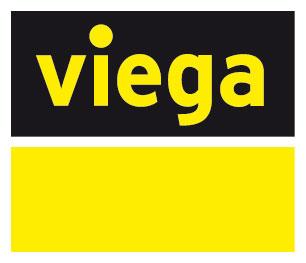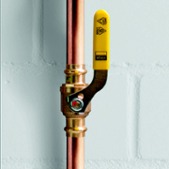“What’s wrong with soldering?”
We hear that question a lot. And there’s nothing wrong with soldering or “sweating” copper pipe. It’s reliable, relatively easy to learn and every plumbing contractor should know how to do it. But it’s not the best way to join copper pipe -- pressing with ProPress is. Here are seven reasons why:
1. Pressing is safer than soldering.
The primary disadvantage – and danger – of soldering is that it requires heat and an open flame. Whether it’s new construction, remodeling or repair, using a flame introduces an element of risk to people and property and requires additional safety precautions, including, sometimes, a fire watch.
A National Fire Protection Association report examined U.S. structure fires caused by hot work from 2014-18. It found that soldering equipment was responsible for 18% of fires caused by hot work.
No flame means no need for a fire watch or to pull a permit for hot work. That saves time and money. And pressing is safe to use in situations where the risk of a fire or explosion is so great that it’s extremely dangerous or impossible to do hot work, like in hospitals, oil refineries, chemical plants, etc. In those cases, pressing is the only safe solution.
2. Pressing is faster than soldering.
Even when done by the most skilled contractor, soldering is slow, taking several minutes per joint. The prep, including application of flux and readying the pipe, is time-consuming.
Pressing does not take as much preparation and, regardless of the size and material of the pipe or tubing, can be done in as little as a few seconds per joint. On larger jobs, pressing saves hours and even days – which saves money.
3. Pressing is more accurate than soldering.
Cut the pipe, attach the fitting and press the trigger. That’s pressing in a nutshell. The pipes do not have to be thoroughly cleaned, like they do in soldering, and there is no flux or solder involved. Pressing depends less on the individual contractor’s skill and experience to be done correctly.
4. Pressing can be done wet.
Soldering can’t be done on pipes if water is running through them. That means having to turn off the water at a dedicated valve or at the main, then draining the system before soldering. All of that takes additional time and creates a mess.
Pressing can be done without turning off the water, which saves time and cleanup and minimizes downtime.
5. Soldering doesn’t have Smart Connect.
Viega’s Smart Connect technology makes it easy for contractors to identify unpressed connections during testing. There’s no way to do that with a soldered joint.
6. Pressing looks better than soldering.
No matter how skilled the contractor, soldering leaves residue on the pipe. While looks are secondary to performance, contractors take pride in their installations. A pressed connection will always look better than a soldered one.
7. Pressing requires less equipment than soldering.
A deburring tool, a press tool and fittings are all that’s needed to press. Soldering requires a torch, fire cloth, sanding cloth, flux, solder, fitting brush, spray bottle and fire extinguisher.
So, while there is nothing wrong with soldering, pressing beats it in these seven ways.








